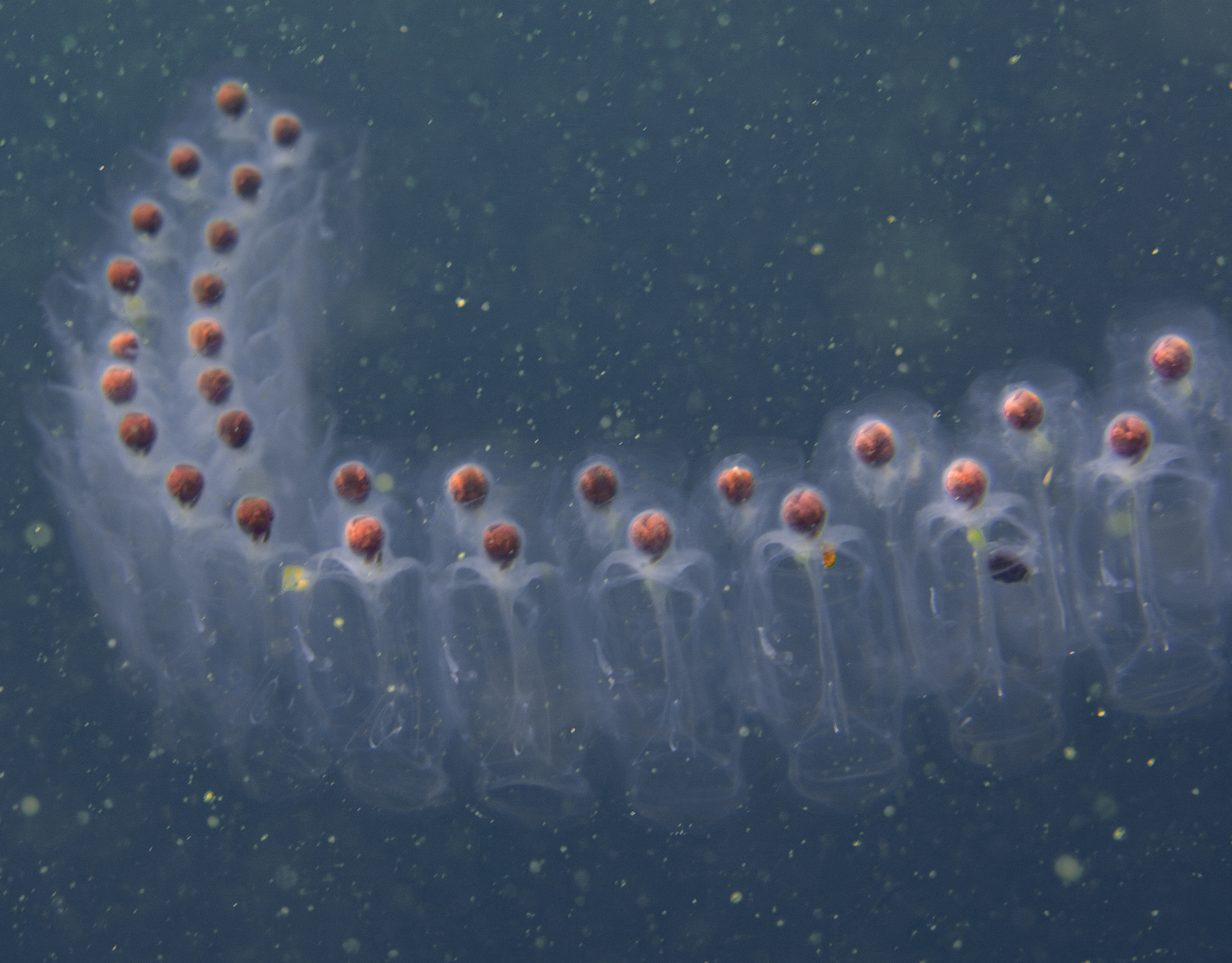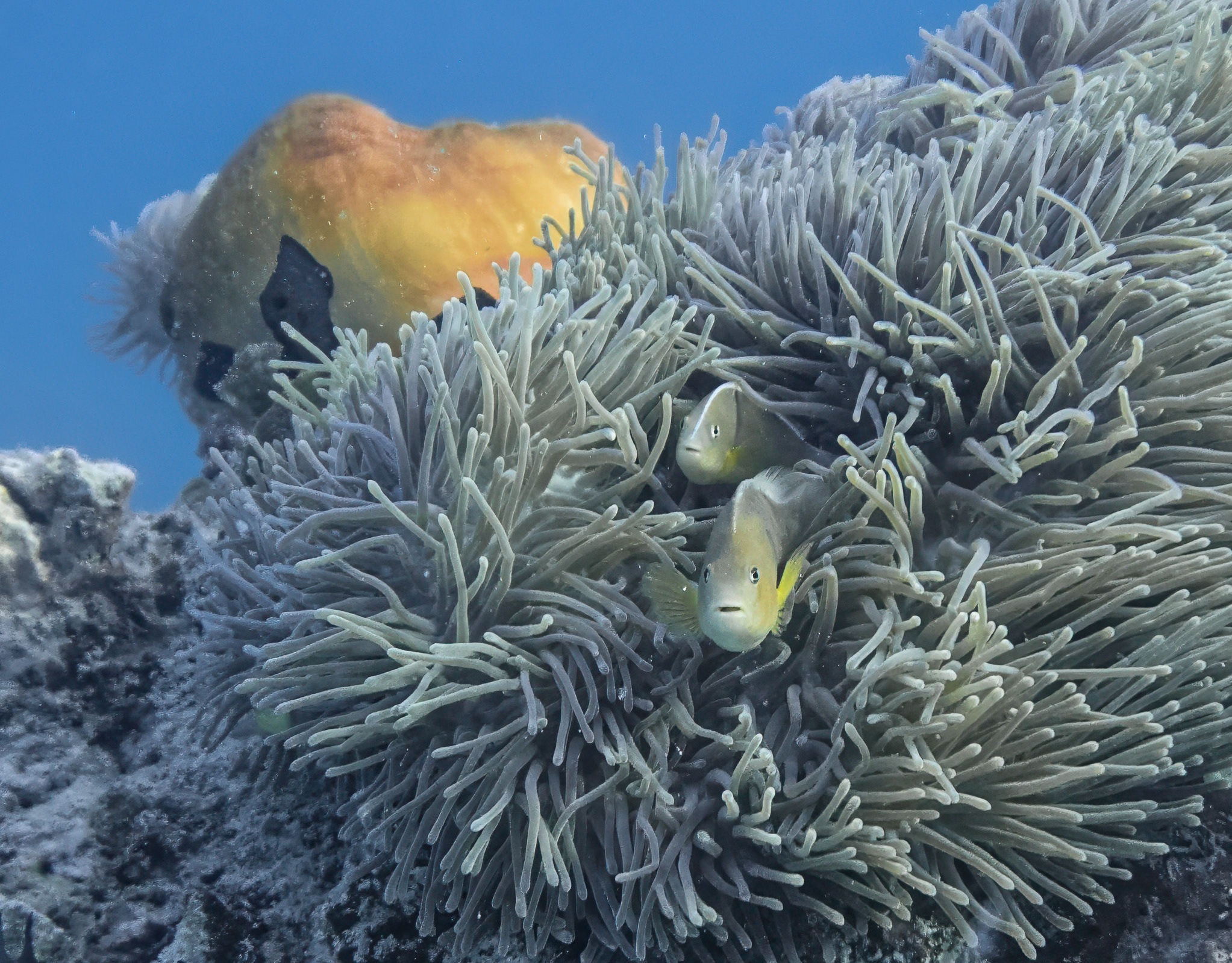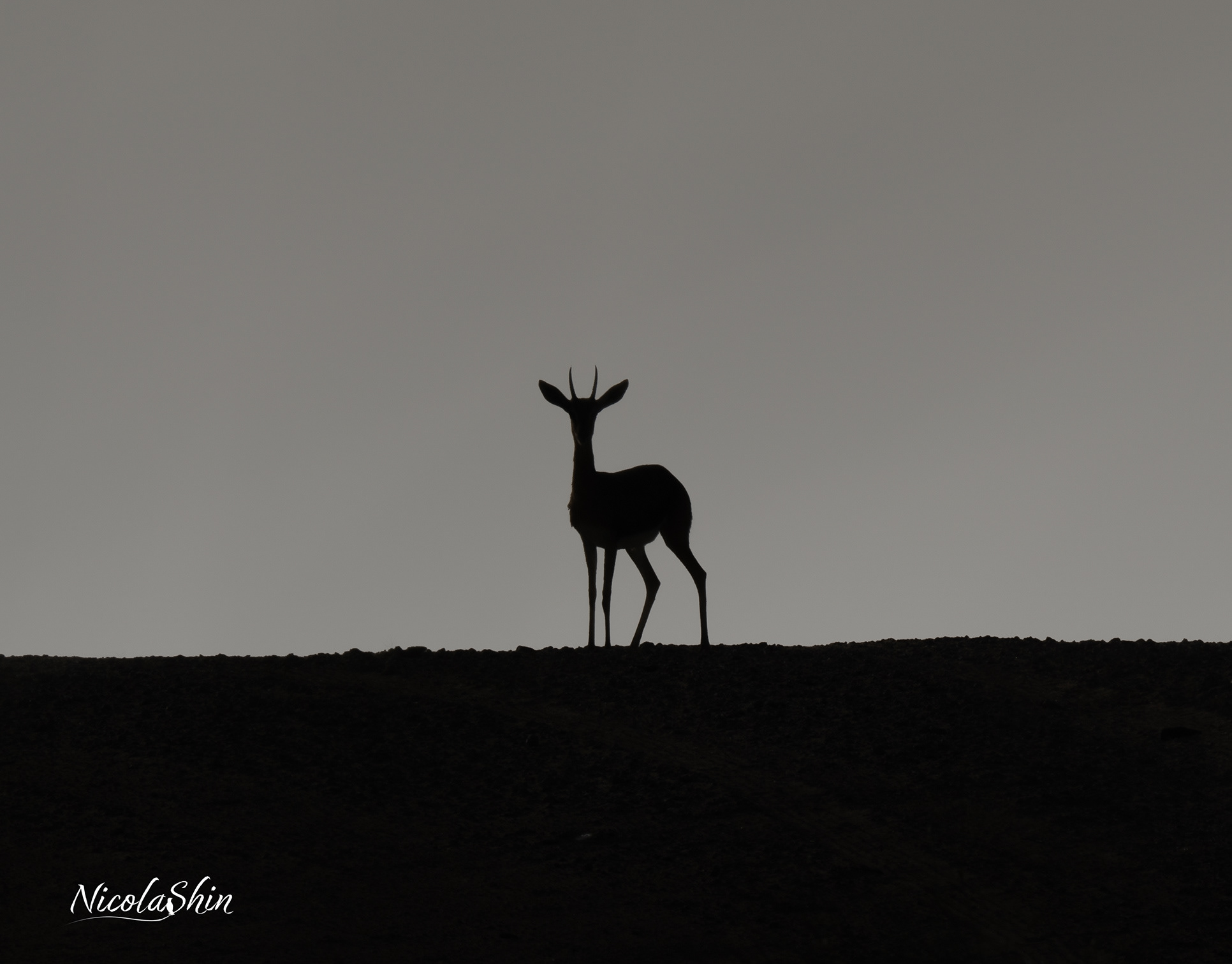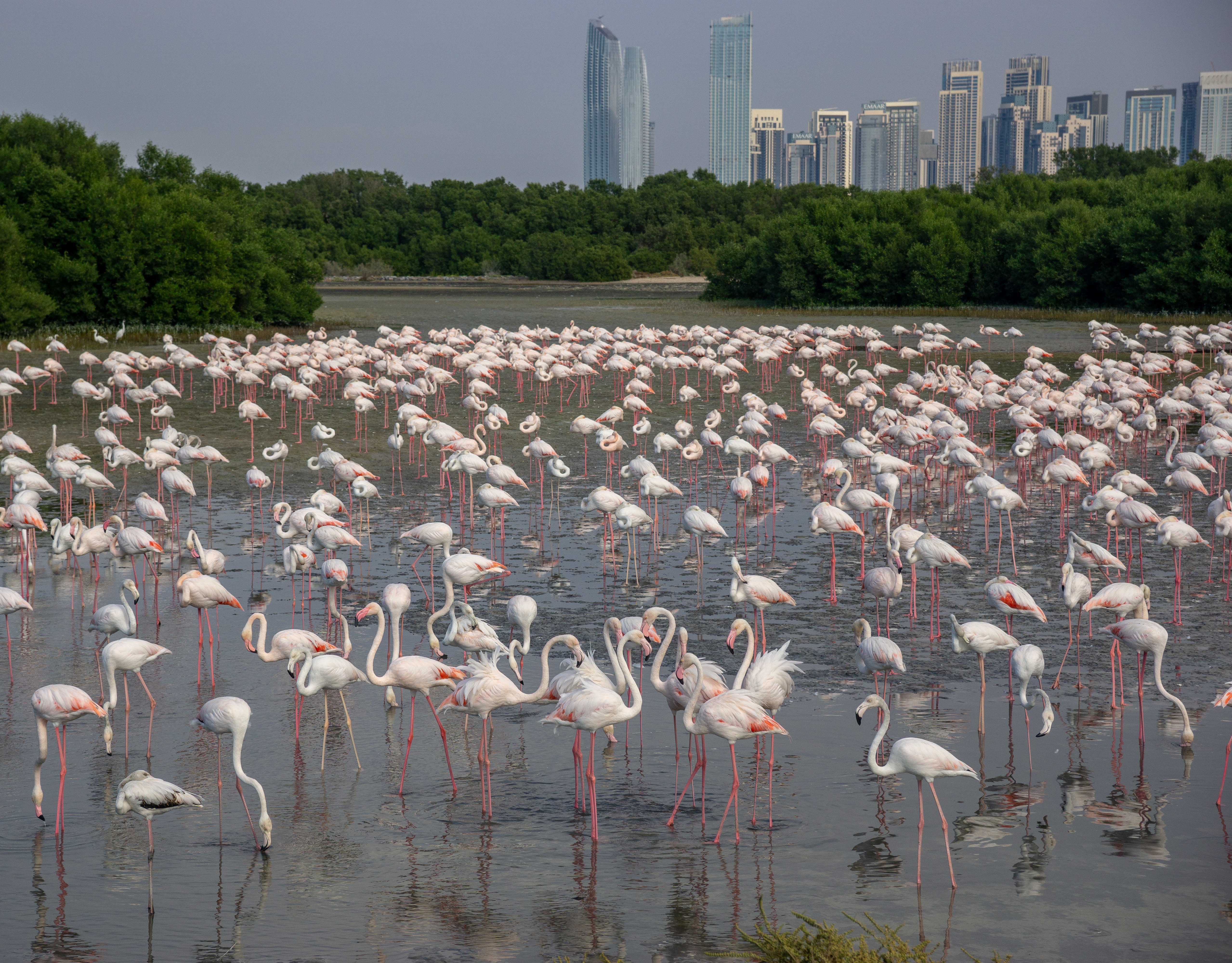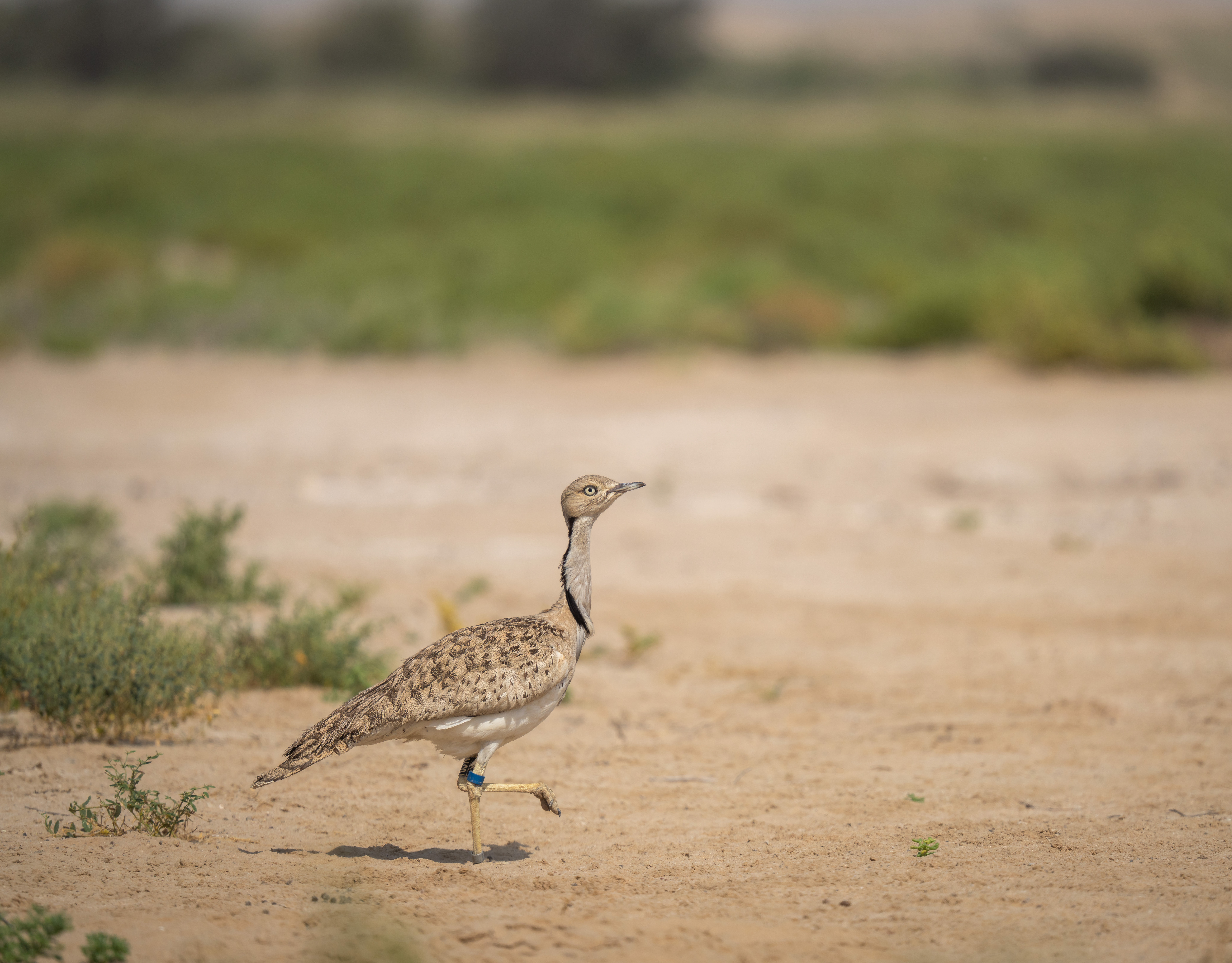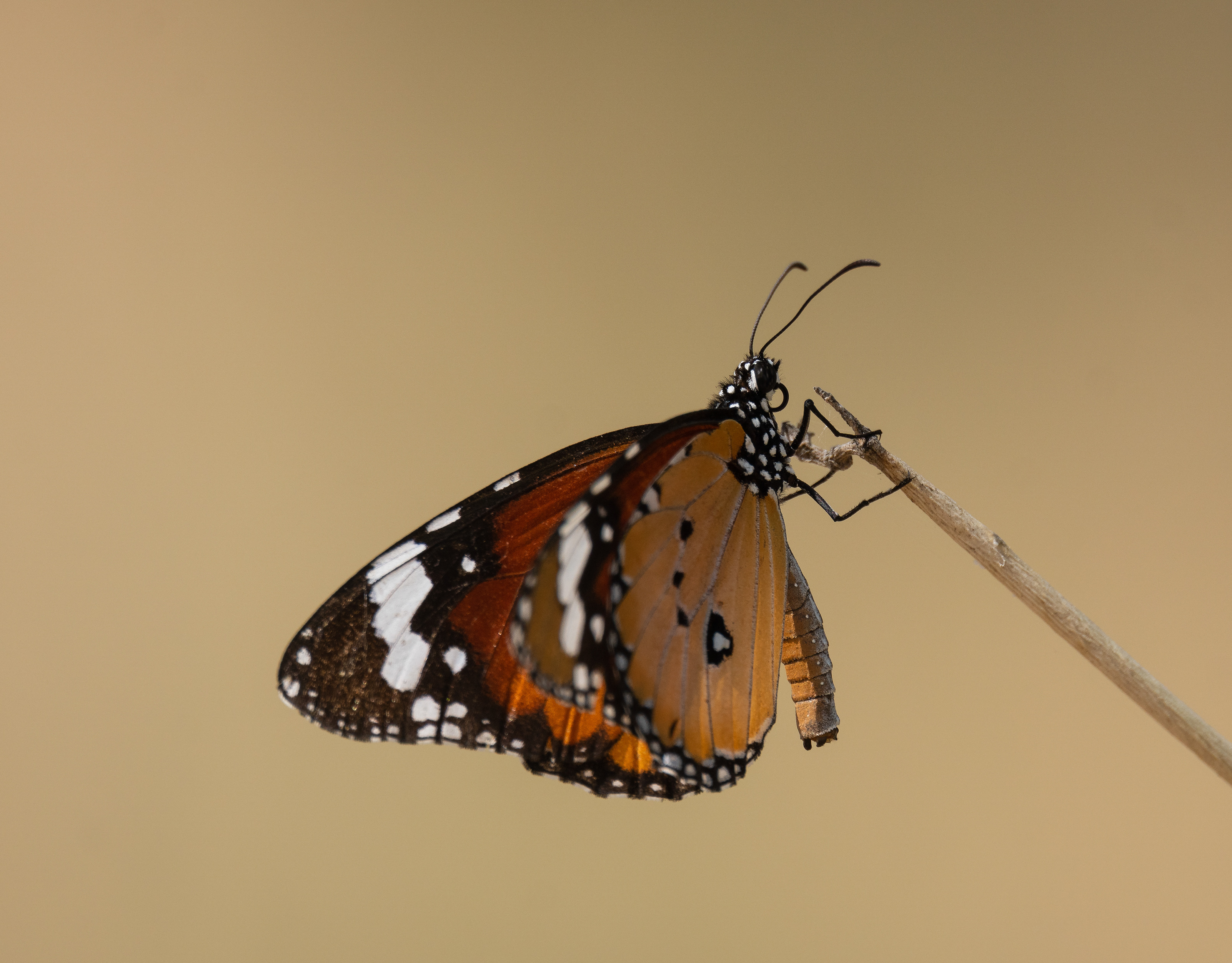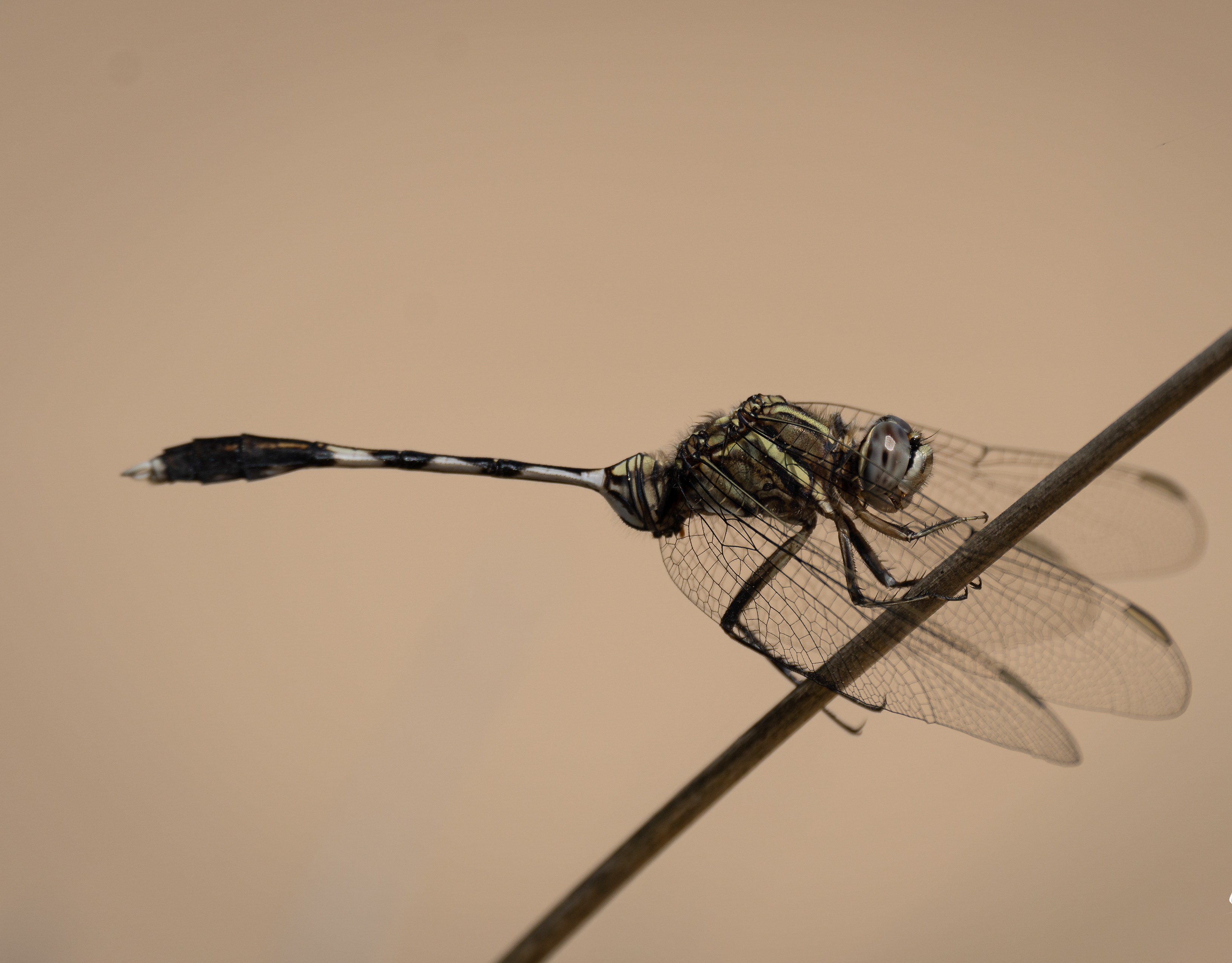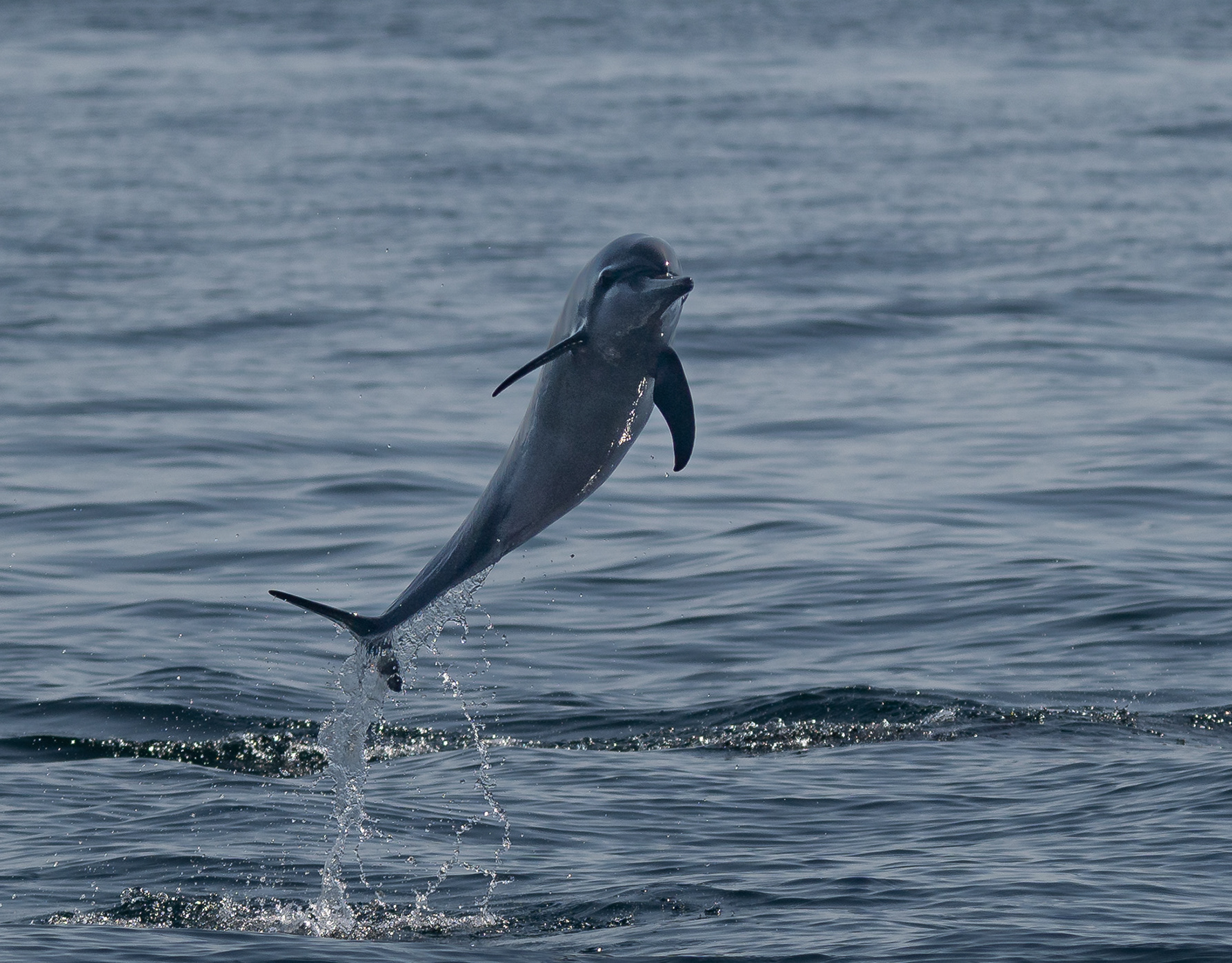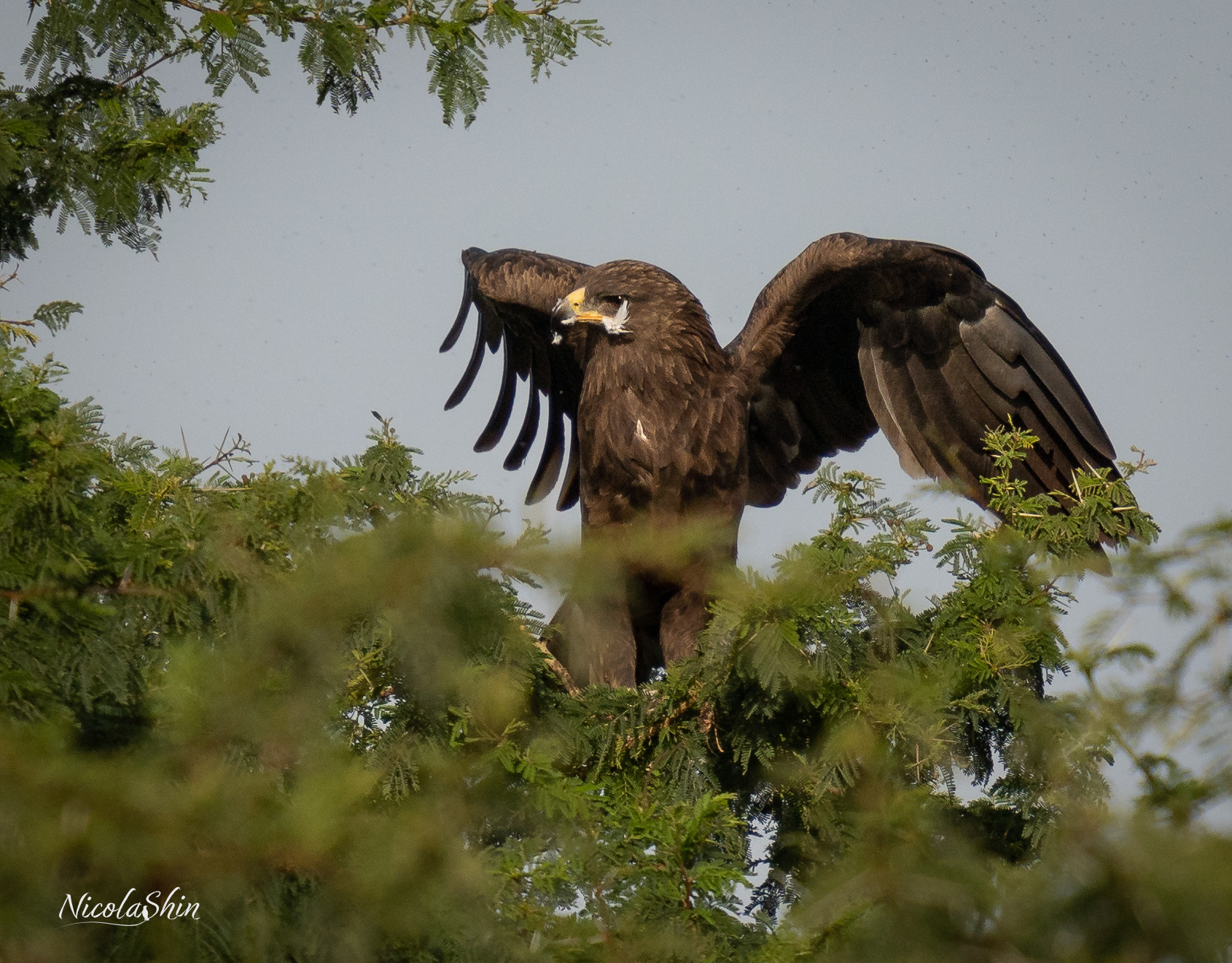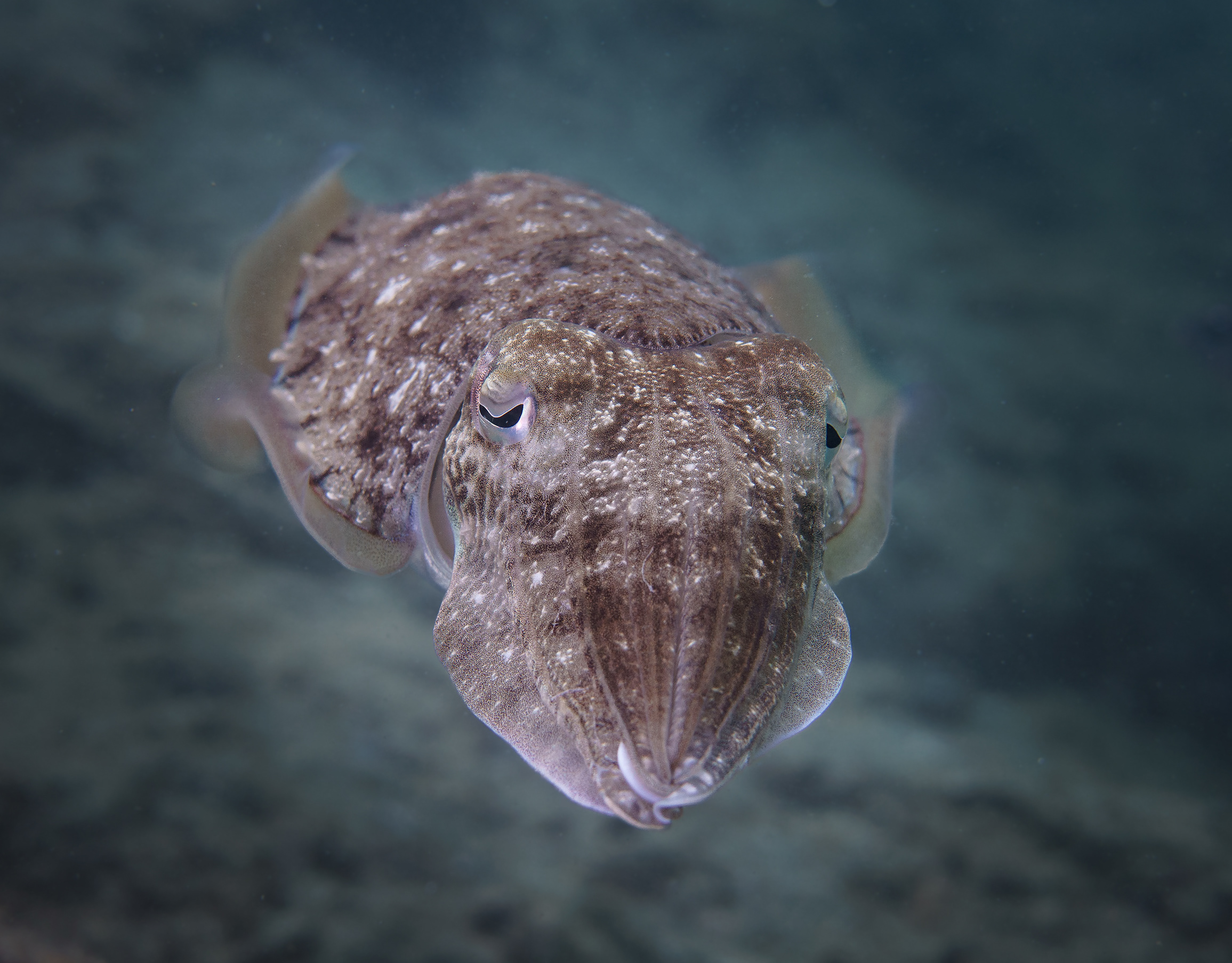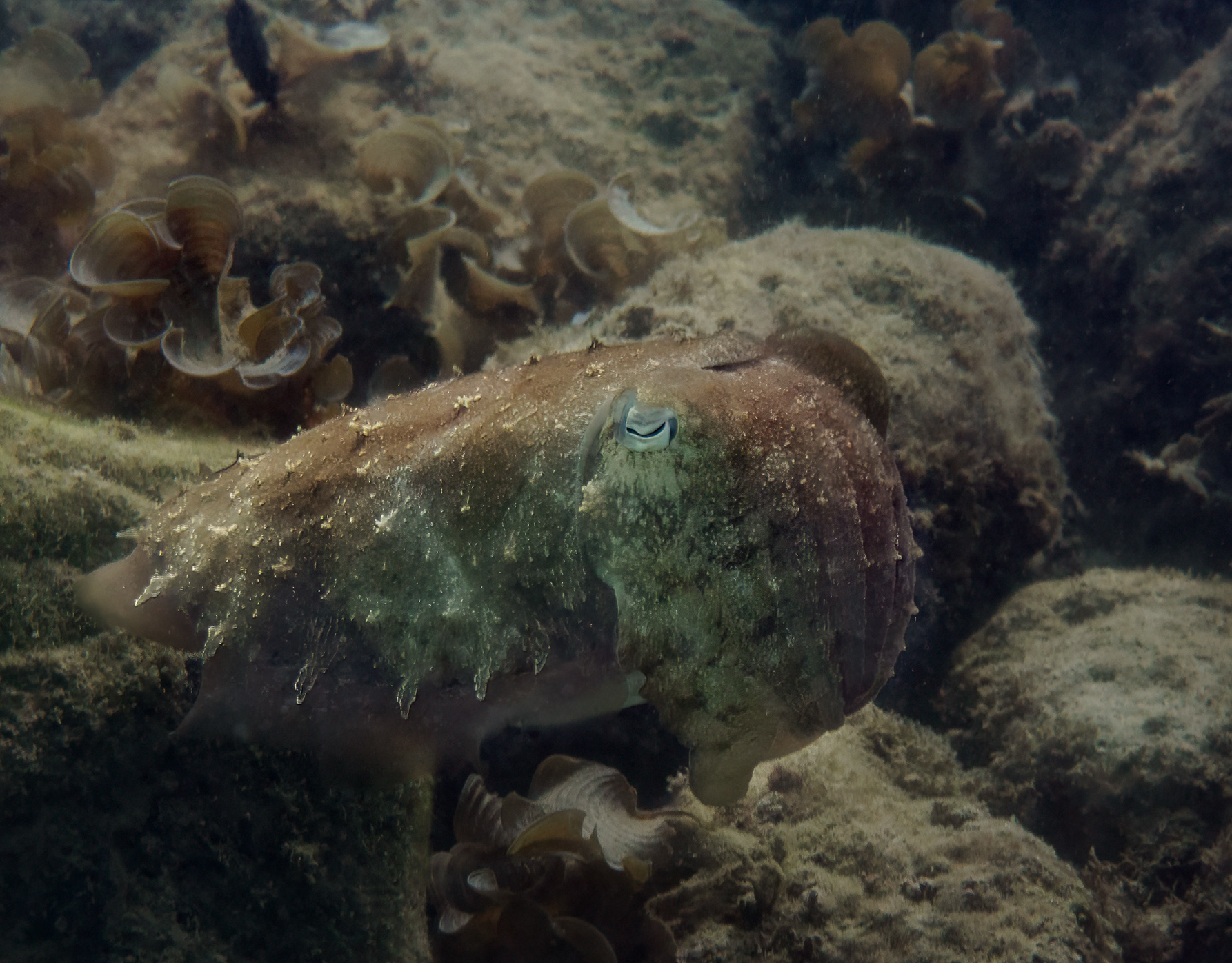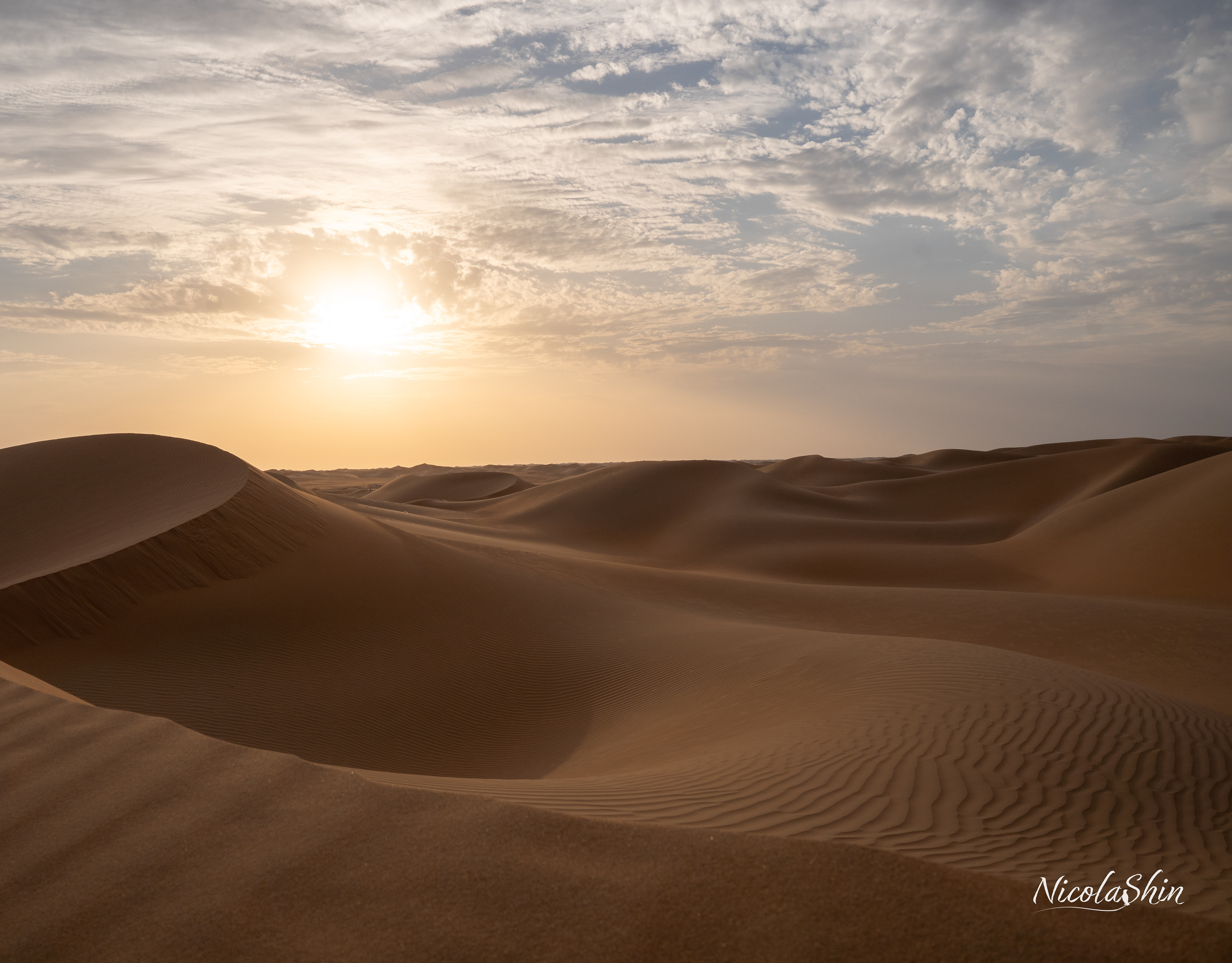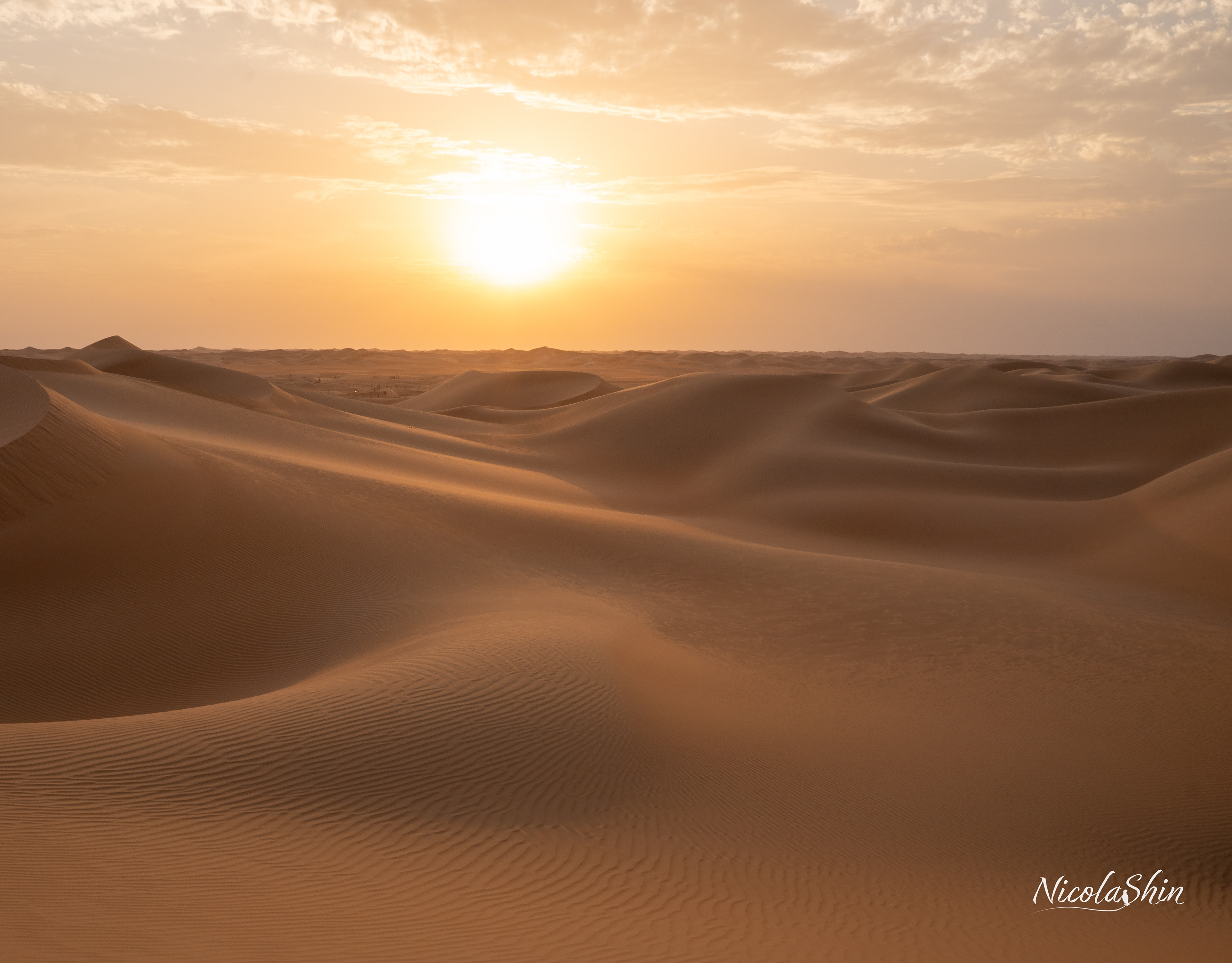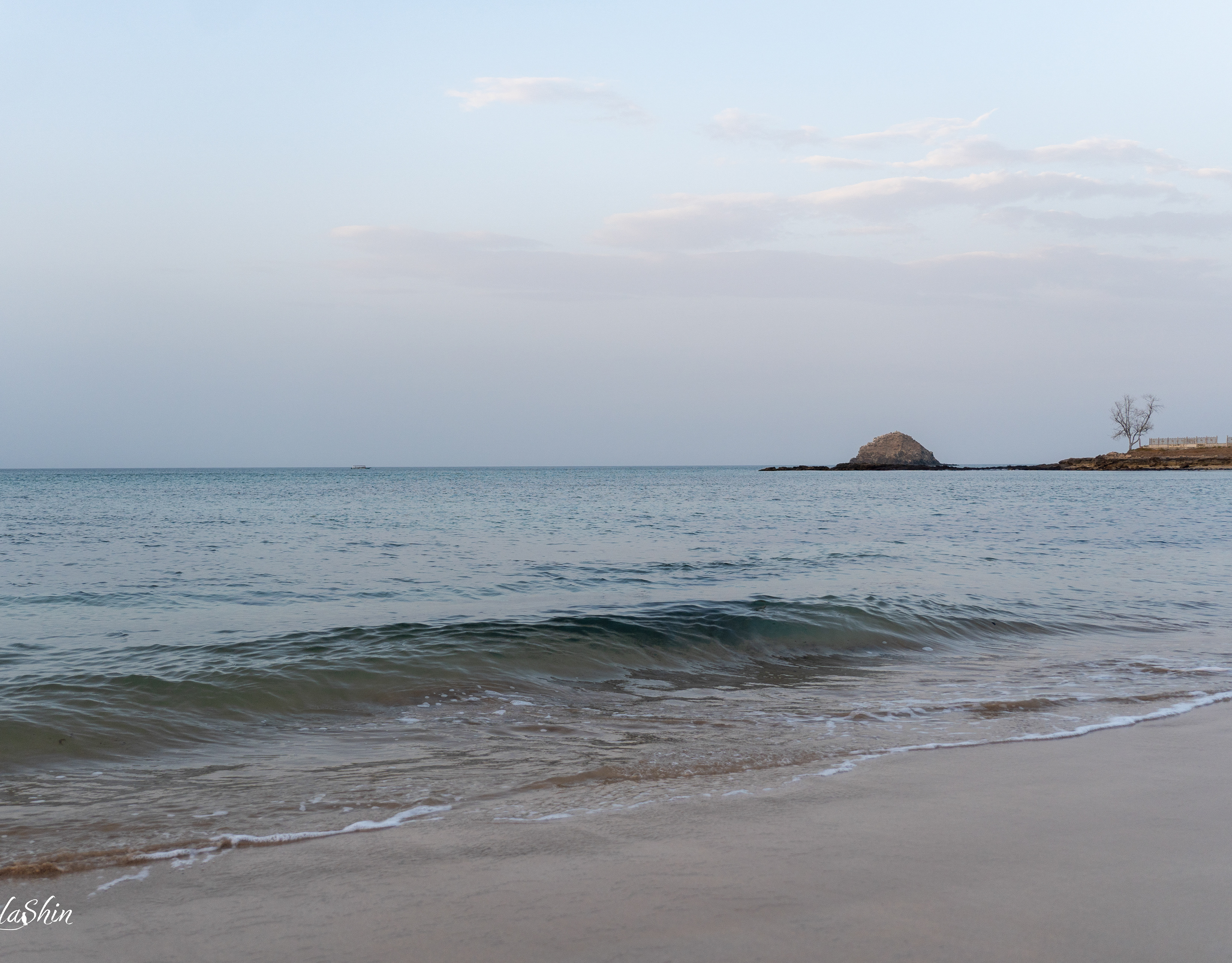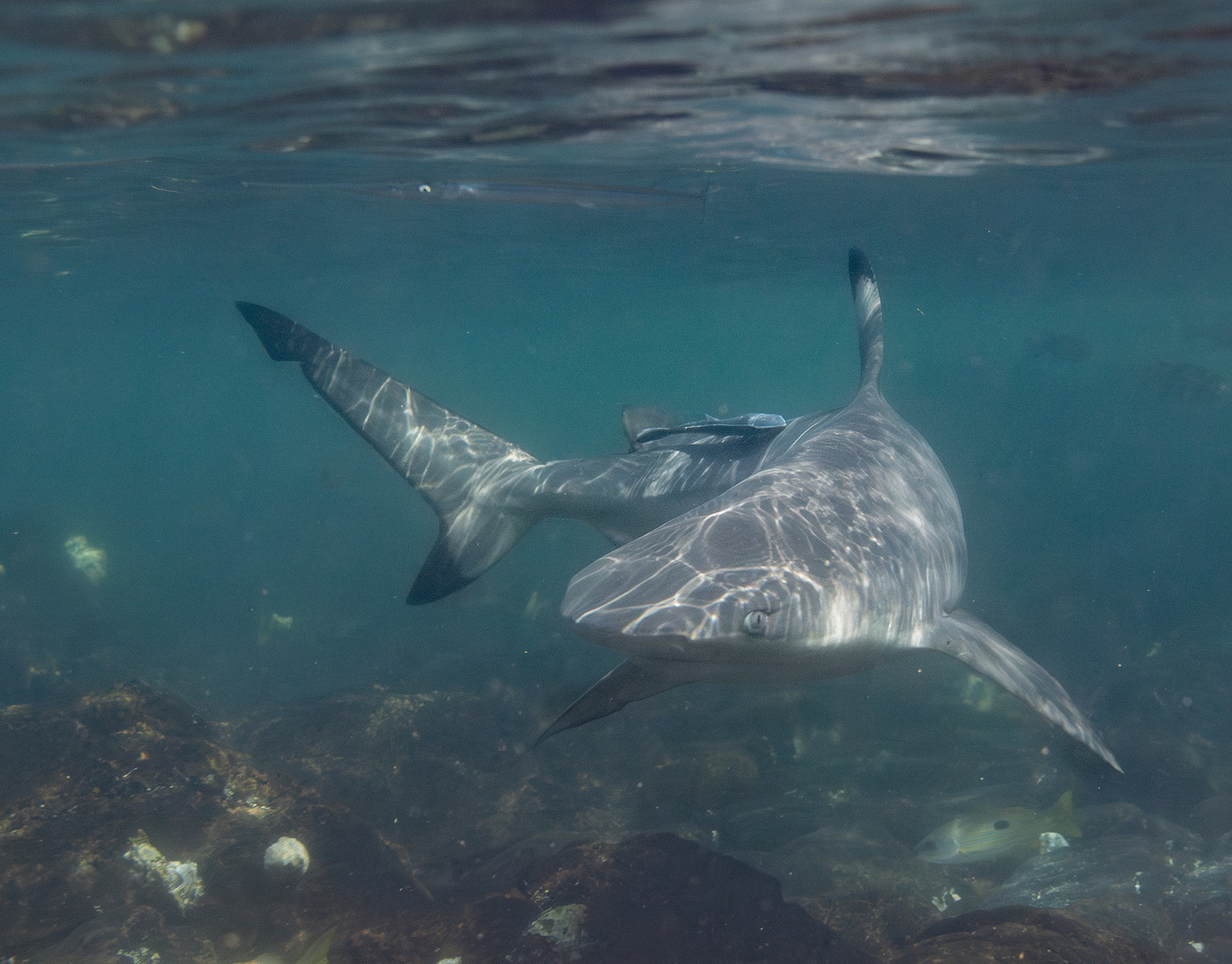April 2023: I woke up early this morning, eager to wander in the dunes before the scorching sun became unbearable. I made my way to Al Qudra lake, my camera equipment in tow, and started scanning the landscape. The sun had just begun to rise, casting a soft, warm glow over the desert landscape. I could hear the distant calls of birds and the gentle rustling of the nearby shrubs. I started walking, I was in my element.
And then, as if out of nowhere, I saw them. A small family of arabian oryx, grazing peacefully in the early morning light. I froze, not wanting to disturb them, and slowly began to crawl closer.
As I approached, I noticed that there were two adults laying down and a young calf. The adults were majestic creatures, with their long, pointed horns and sleek, white fur. The calf was smaller wearing a light brown robe, with a sweet, innocent look in its eyes.
The mother rose and started to feed the calf. He energetically suckled, giving gentle head bumps asking for more, under the reassuring look of the male. And then, all too soon, it was over. The oryx family slowly made their way across the desert, disappearing into the distance. I watched them go, feeling grateful for the experience.
If this encounter is now common in the UAE, it wasn't always the case. Due to hunting and habitat loss, the Arabian oryx became extinct in the wild by the 1970s. The last wild oryx is said to have been shot in 1972.
Thanks to efforts from the Fauna and Flora Preservation Society (now called Fauna and Flora International) and financial help from the World Wide Fund for Nature, breeding programs started in the early 1960s in the USA via "Operation Oryx". Oryx were captured and sent to the Phoenix Zoo in Arizona where the population slowly increased. As the population grew, more zoos and private collections participated in the efforts and the first oryx were released into the wild in the 1980s.
One of the most successful conservation programs has been at Al Ain Zoo in the UAE, which has reintroduced more than 5,000 Arabian oryx. In 2011, 40 years after being declared extinct in the wild, the IUCN Red List of Threatened Species reclassified the Arabian oryx as Vulnerable. A remarkable achievement, the Arabian oryx became the first successfully reintroduced species into its original habitat after being declared extinct in the wild.
Today the Environement Agency of Abu Dhabi claims that the UAE is home to the largest population of Oryx with close to 7,000 individuals roaming in the wild and reserves.
Al Qudra - Wild Oryx
The oryx, designed to survive in the desert
The Arabian oryx is a type of antelope native to the Arabian Peninsulas, it is one of the four species of oryx. It is the smallest one and the only one found outside of Africa. The Oryx is particularly well suited to live in the harsh environement of the desert, sustaining temperatures as high as 45°C+. Thousands years of evolution equiped the species with remarkable adaptation tools to survive in one of the most unforgiving environment on earth.
Its most discintive feature is a white coat that helps to reflect the intense heat of the sun and allows it to blend in with the desert surroundings. The Oryx also possess long, slender legs. These legs are not only designed for running but also for conserving water. The oryx can travel long distances in search of food and water, and its long legs help to reduce the amount of energy it expends while moving through the sand. Additionally, the oryx's hooves are broad and splayed, which allows it to move more easily over the shifting sands.
Optimizing water conservation is of the utmost importance in the region where little to no water water is to be found in summer. The oryx has developed a specialised digestive system that allows it to extract as much water as possible from the vegetation it consumes. Additionally, the oryx's kidneys are adapted to concentrate urine, allowing it to excrete waste with a minimum of water loss. This allows the Oryx to survive several months without drinking.
Instead of loosing moiture via sweating or evaporation to maintain their body temperature, the oryx can regulate its body temperature by increasing blood flow to its extremities, allowing it to dissipate heat through its skin. Furthmore to sustain harsh desert conditions, the Oryx developed adaptive heterothermy; its body temperature can vary according to its environment. It is during the hot summer months that the temperature variation is the highest. During hot days the body temperature can reach 46.5°C and as low as 36°C during cold nights. One study (1) in Saudi Arabia measured the largest daily amplitude ever recorded for a large mammal: 7.7°C for two of the oryxes during the hot-dry period. Thanks to selective brain cooling (2), the Oryx can lower its brain temperature compared to that of carotid arterial blood temperature during hot and arid weather in order to conserve body water.
The Oryx can also smell rain in the distance, optimizing its chances to find fresh grazing and sources water.
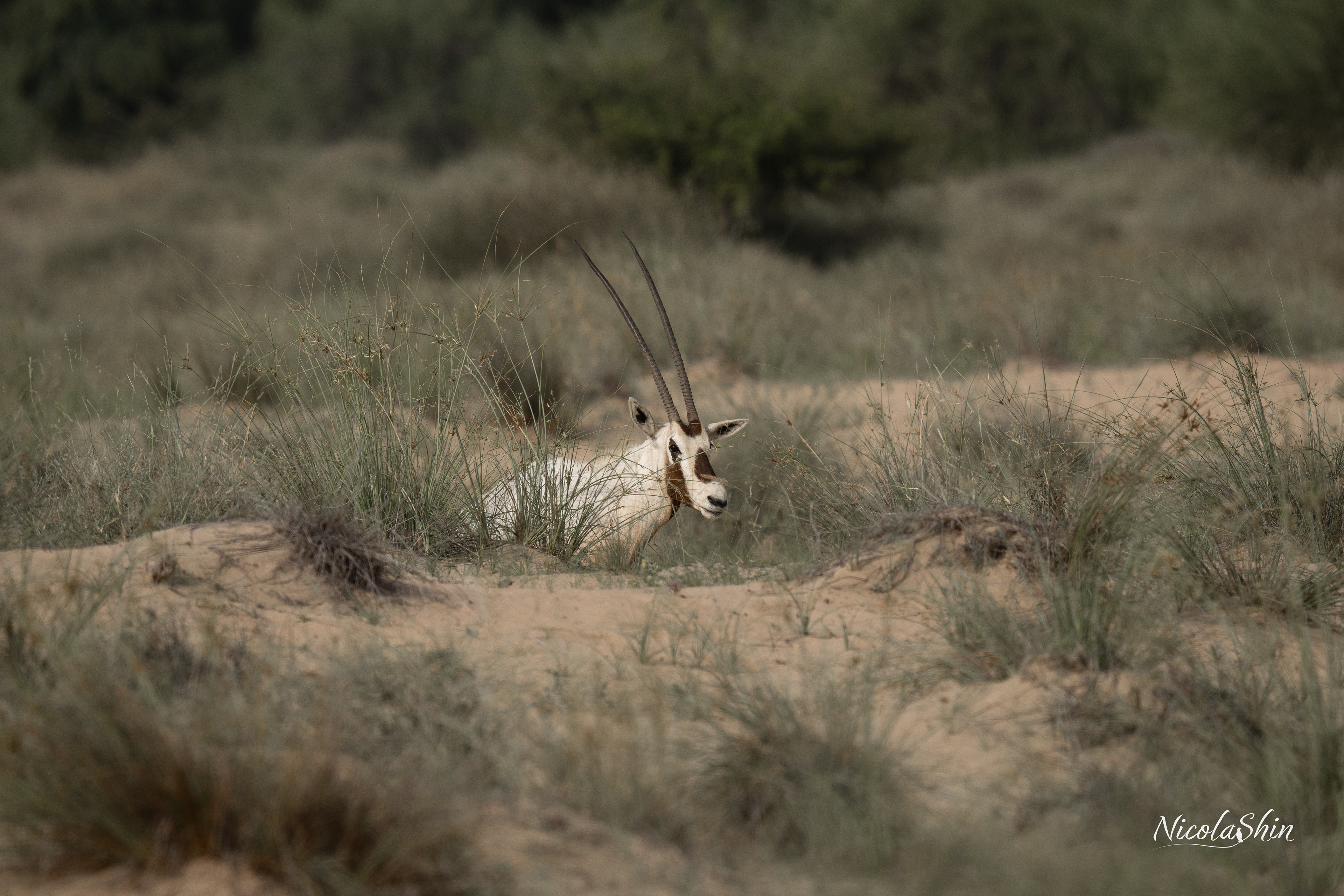
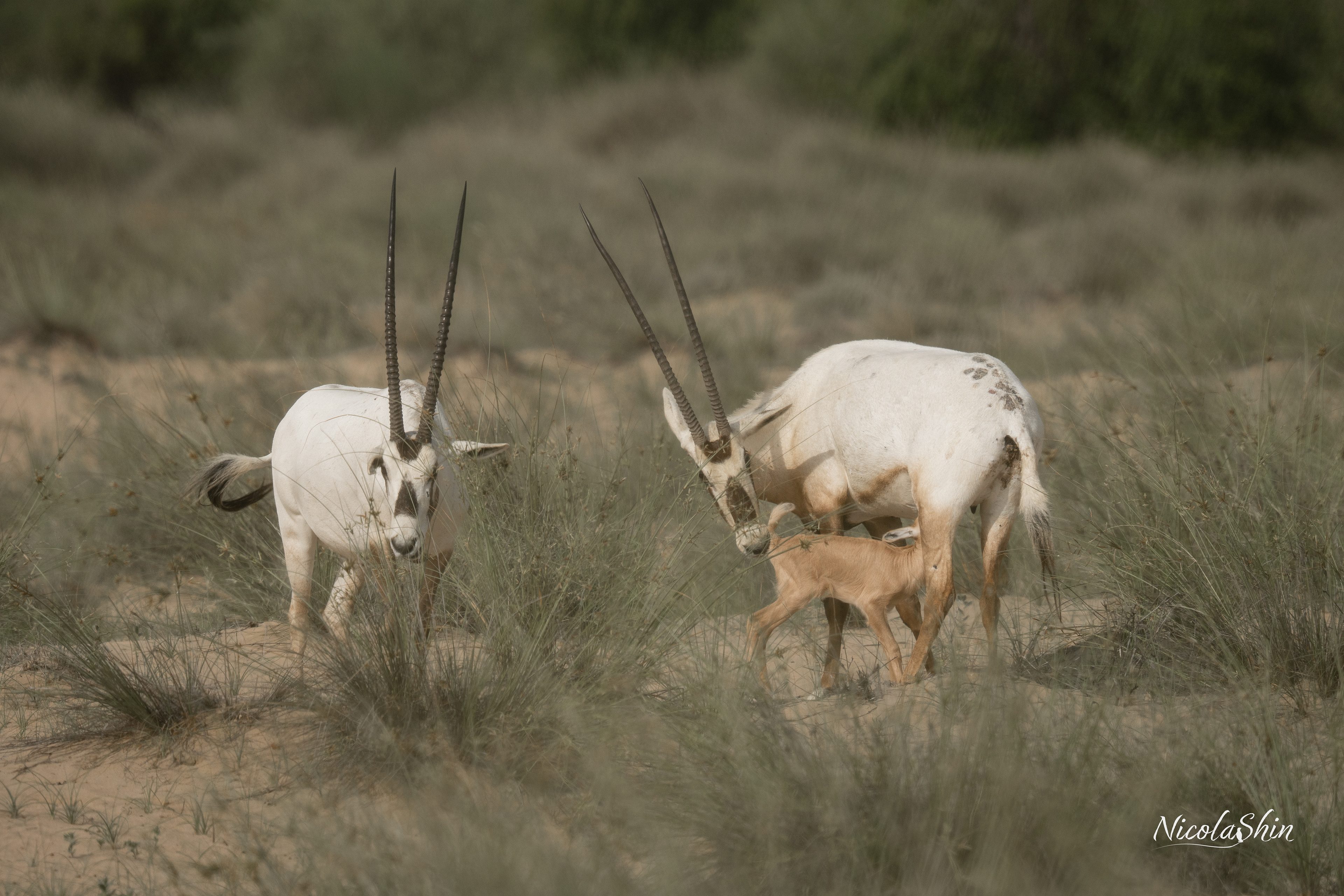
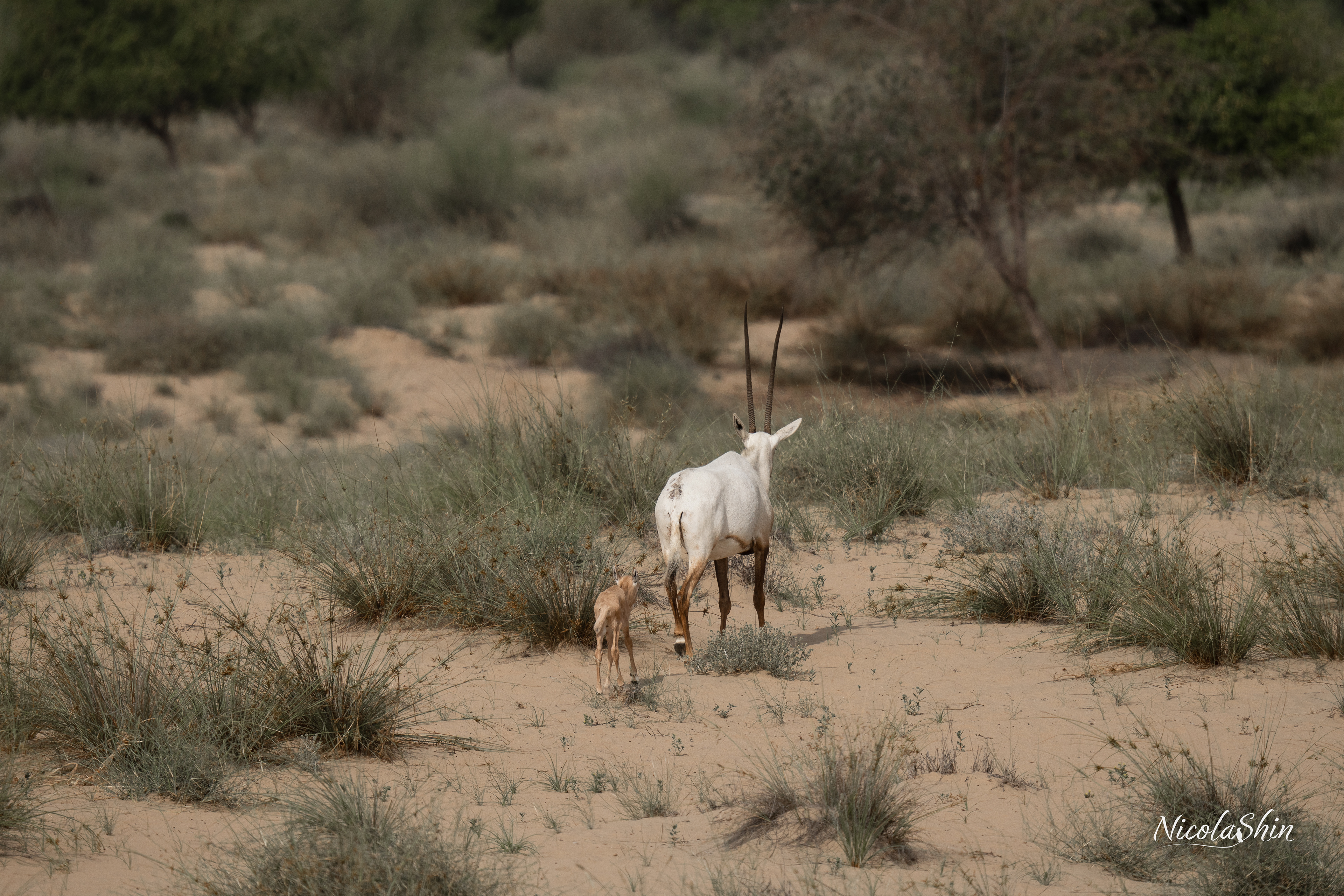
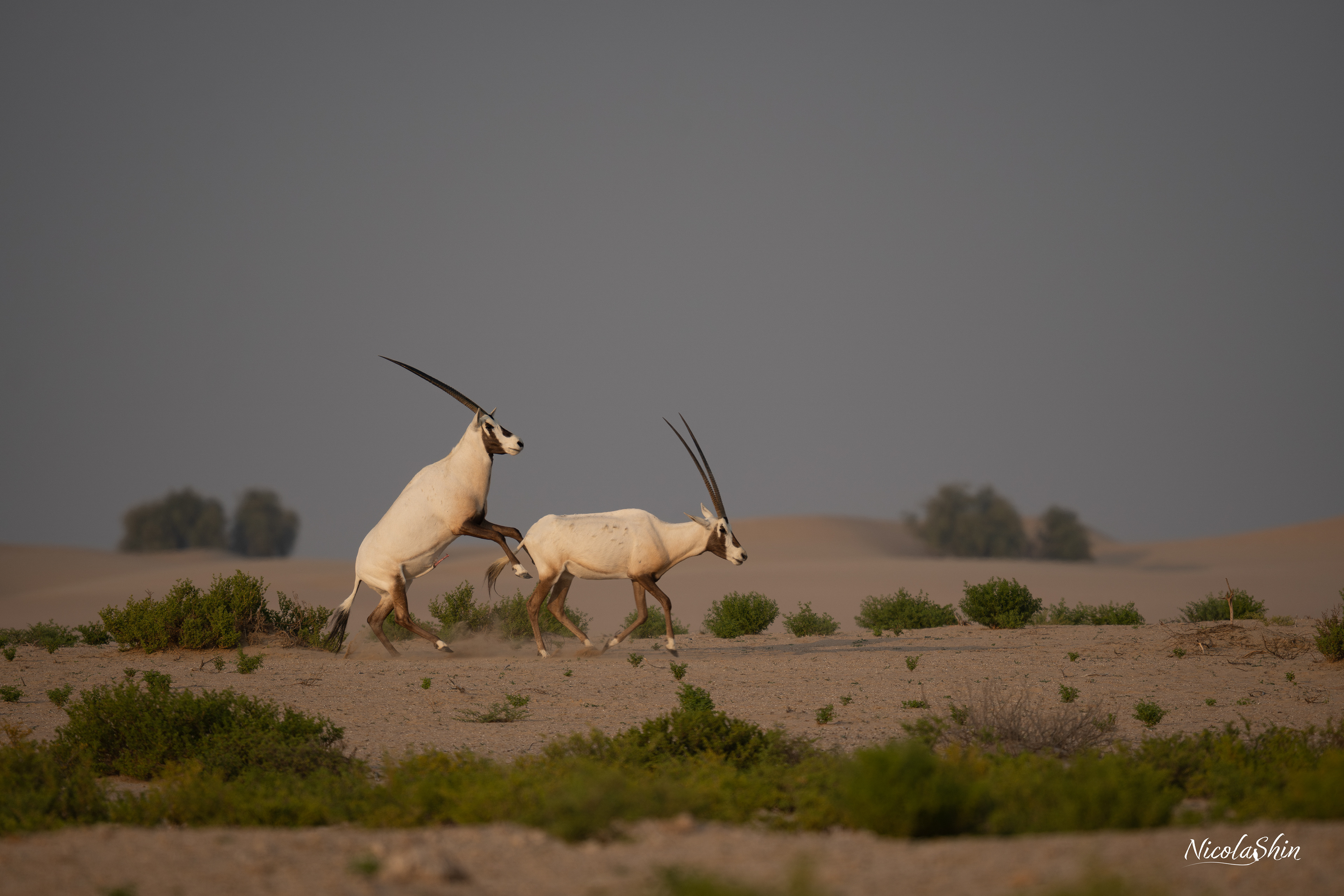

Where to see the Oryx in UAE: The Arabian oryx is magestic animal that has been an important part of the UAE’s heritage for centuries. Thanks to conservation efforts it is now possible to see it in several parts of the country:
- Abu Dhabi’s Qasr Al Sarab Protected Area
- Arabian Oryx Protected Area near Al Ain
- Dubai Conservation Reserve
- Al Marmoon Conservation Desert
- Arabian Oryx Protected Area near Al Ain
- Dubai Conservation Reserve
- Al Marmoon Conservation Desert
Where to take photos of the Oryx near Dubai: I enjoy shooting in Al Qudra. Not only are you likely to see oryxes if you wonder in the desert early morning but you'll get the opportunity to see amazing fauna too.
References:
1. Hetem RS, Strauss WM, Fick LG, Maloney SK, Meyer LC, Shobrak M, Fuller A, Mitchell D. Variation in the daily rhythm of body temperature of free-living Arabian oryx (Oryx leucoryx): does water limitation drive heterothermy?
1. Hetem RS, Strauss WM, Fick LG, Maloney SK, Meyer LC, Shobrak M, Fuller A, Mitchell D. Variation in the daily rhythm of body temperature of free-living Arabian oryx (Oryx leucoryx): does water limitation drive heterothermy?
2. Robyn S. Hetem, W. Maartin Strauss, Linda G. Fick, Shane K. Maloney, Leith C. R. Meyer, Andrea Fuller, Mohammed Shobrak, Duncan Mitchell; Selective brain cooling in Arabian oryx (Oryx leucoryx): a physiological mechanism for coping with aridity?

